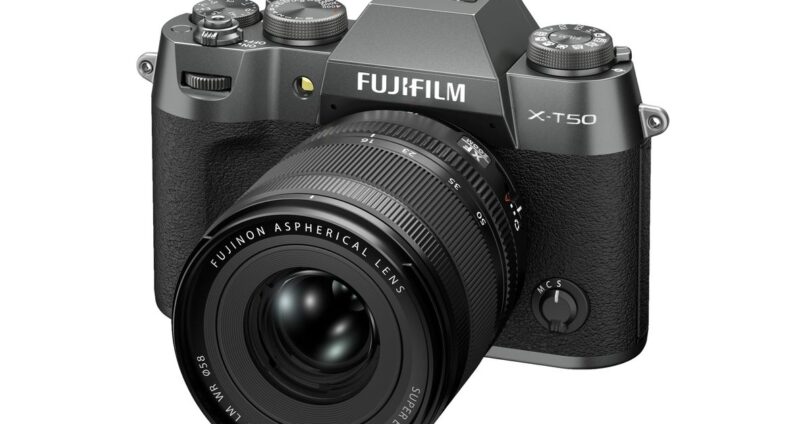Fujifilm has just announced a pair of new cameras at the company’s X Summit Sydney event. There’s the medium format GFX100S II, which frankly falls outside my scope of interest (and budget). The more mainstream of the two is the X-T50, which is a followup to — but not a replacement for — the X-T30 II, which will remain in Fujifilm’s lineup moving forward.
The X-T50 is a hodgepodge of the camera maker’s new and old tech. Let’s start with the new. The body has a fresh, more rounded shape that’s unlike anything else in the X-Series lineup, and there’s a film simulation dial right on the top, a first for any Fujifilm camera. You get several preset film sims to circle between and can choose your own for the three customizable slots — though you can’t set these to custom film recipes. Still, the dial goes to show what a vital part of Fujifilm’s appeal that these simulations have become over the years.
The X-T50 includes the same 40-megapixel sensor as the X-T5 and X-H2, plus the accompanying fifth-gen processor, so this camera offers a substantial increase in both resolution and autofocus performance compared to the X-T30 II. And it also gains a 7-stop in-body image stabilization system; the far less expensive X-T30 II lacks IBIS altogether. Continuous shooting is limited to 8fps with the mechanical shutter, whereas the X-T5 and X-H2 can both hit 15fps. For storage, there’s a single UHS-II SD card slot. Video performance has also been dialed up significantly:
But there are still some older hardware elements to this camera. For one, you’re stuck with the last-generation battery that isn’t nearly as long-lasting. And disappointingly, the electronic viewfinder is also unchanged from the X-T30 II. You do at least get the same 3-inch, 1.84-million dot rear LCD with two-way tilt as on the X-T5.
The X-T50 slots into a curious spot when it comes to pricing. If you’re buying the body alone, it’s $1,399.99, which is $500 more than the X-T30 II. But again, Fujifilm doesn’t consider this a replacement for that camera. It gets its own unique place in the lineup, which now looks like this:
Some of the upgrades that come with stepping up to the X-T5 include water resistance, a nicer EVF, dual SD slots, better continuous shooting performance, and the newer battery with superior endurance.
Fujifilm’s kit lens is also getting a notable revamp. The company’s well-regarded 18-55mm glass is being replaced by a new, lighter 16-50mm f/2.8 – 4.8 lens that now features water resistance. (The X-T50 itself doesn’t have any official water resistance.) Fujifilm believes this lens does a better job resolving that 40MP sensor compared to the ancient 18-55mm. It’s also a constant length, so all the zooming now happens internally without the lens having to extend. Sold on its own, the new 16-50mm lens costs $699. The combined X-T50 kit runs $1,799.99, so you’re only paying $400 for the lens in that scenario.
Source link








